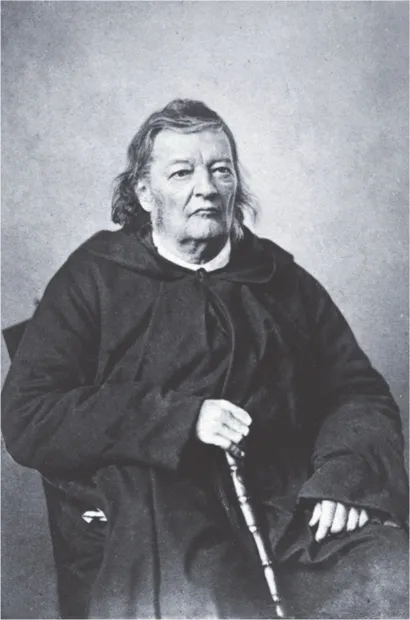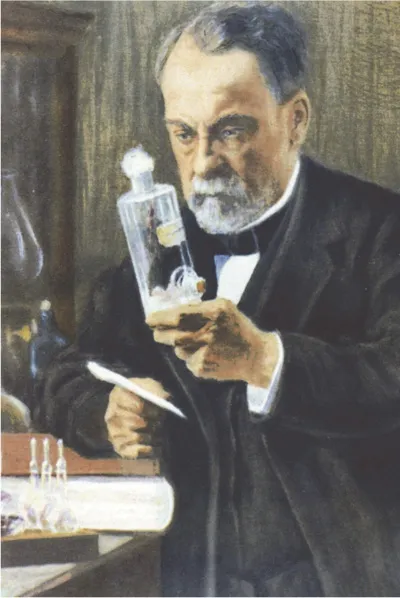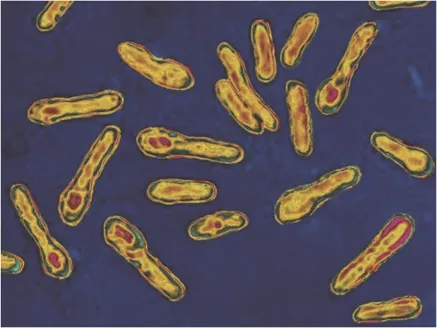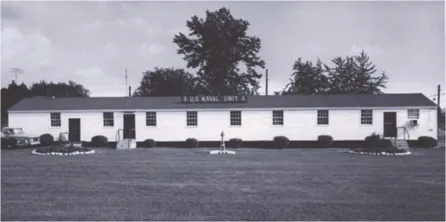Chapter 1: Botulinum Toxin
Botulinum toxin (Botox®) consists of 7 types of neurotoxins; however, only toxins A and B are used clinically. Botox A is used for several disorders in the field of medicine, particularly in dermatology, for cosmetic purposes. It is produced by the bacterium Clostridium botulinum and can be used as a treatment to reduce the appearance of wrinkles in the upper areas of the face, elevate the eyebrows and treat problems such as migraine, hyperhidrosis, lichen simplex, pompholyx (dyshidrotic eczema) and acne vulgaris.
The Long History of Botulinum
1793 was an eventful year by any standards. It started with the French King Louis XVI being guillotined in front of a cheering crowd in Paris and ended later that year with the execution of his wife, Marie Antoinette. The fact that Louis had tried to escape and was captured while trying to make a purchase at a store, where the clerk recognised his face on the coinage, only added to the drama. It was around the time that the British Admiralty began to supply citrus juice to its navy ships to prevent scurvy and the Holy Roman Empire decided to declare war on France after it banned Roman Catholicism. Across the Rhine, in Southern Germany, a food poisoning epidemic caused by eating uncooked blood sausages was claiming the death of over the half of those patients who fell ill. The symptoms of the disease included malaise, nausea, vomiting, diarrhoea, double vision, dilated pupils, fatigue, unsteady gait, difficulty swallowing, thirst and, when fatal, unconsciousness, rigor and ultimately death. The disease and the remnants of the century passed, and the Acts of Union of 1800 united the Kingdom of Great Britain with the Kingdom of Ireland. The nineteenth-century started off with the armies of Great Britain, Prussia, Austria, and Russia finally ending the Napoleonic wars and subsequently dismissing the French armies to their homes after twenty two years of war.
Justinus Kerner (1786-1862) German physician
However, in this poverty-stricken landscape, disease and pestilence was never far away and in 1817, the dreaded uncooked sausage food poisoning returned to the town of Baden-Wurttemberg. All this mention of disease and food poisoning in the days before antibiotics would have passed idly into history except for the actions of a meticulous medical doctor called Justinus Kerner. Justinus, who later became one of Germany’s greatest romantic poets, was born in the small town of Ludwigsburg in 1786, the same year that the first British convict ships set sail to Botany Bay in Australia. During his teenage years, he was apprenticed in a cloth factory but in 1804, he entered the University of Tübingen to study medicine. In 1808, he graduated and settled as a practicing physician in Wildbad. In 1815, he obtained the official appointment of district medical officer in Gaildorf, and three years later, he was transferred to Weisberg, where he was to spend the rest of his life. The local townspeople gave him a house at the foot of the historical Schloss Weibertreu and within these walls, he dedicated all his spare time to discover the cause of the dreaded food poisoning, which was killing half of his patients.
Between 1815 and 1820, Kerner investigated 155 cases, treated 12 patients, performing autopsies on some of them. He also gave extracts from sausages that had been confiscated by the police to different animals and observed their reaction before dissecting the remains. In 1822, he published the first systemic description of the clinical picture of botulism, a lethal type of food poisoning known since the era of the Roman Empire. At the end of his publication, he concluded that there was no cure for sausage poisoning and recommended that ‘all blood sausage and liverwurst still on the fireplace by February should be thrown out by the chimneysweep with the other rubbish’. With great foresight, in the dying throes of his seminal paper, the poetic doctor also noted that small amounts of the sausage poison might be useful for neurological conditions such as St Vitus’ dance. St Vitus’ dance or Sydenham’s chorea is a disorder characterized by rapid, uncoordinated jerking movements primarily affecting the face, hands and feet. It is an autoimmune disease that results from childhood infection with Group A beta-haemolytic Streptococcus.
Without knowing it, Justinus Kerner laid the opening shots in the greatest contribution of biology to the world of cosmetic medicine… he was describing the neurological action of Botulinum toxin, later to be known to in another century as Botox®! Kerner could isolate the toxin and use it to kill other animals, but he was lacking the biggest piece of the jigsaw – what was it and how was it formed.
The next part of the botulinum toxin journey takes us back across the Rhine to meet one of the greatest scientists that the world has ever known, …. Louis Pasteur.
The Influence of Louis Pasteur
Louis Pasteur
Louis Pasteur’s seminal work from the late 1850s proved that milk became sour because of yet unknown living organisms; by verifying the ‘germ theory’, This work would change the whole outdated post-Aristotelian pathology and surgery forever. Of course, this great thesis led to the discovery that the bacteria van Leeuwenhoek found in his microscope slides in 1668 could cause disease and illness. Pasteur died in 1895, and in that year, the dreaded disease struck again, and this time in the exalted company of the salted pork dish at the annual gathering of the Music Society in the town of Ellezelles in Belgium.
Émile van Ermengem (1851-1932), Belgian bacteriologist
Three people eventually died from the resultant food poisoning, amongst them a close friend of one of society’s eminent members – the microbiologist, Professor Emile P. Van Ermengem.
The professor took the death of his friend personally and armed with the twin technologies of van Leeuwenhoek’s microscope and Pasteur’s closed flasks, and in 1896 became the first person to isolate the microbe Clostridium botulinum from both the food and the post-mortem tissue of victims who had died. He also knew that the disease process was caused by a toxin produced by this bacterium.
Clostridium botulinum
It is worth mentioning Behring (an assistant of Robert Koch), Behring, who in the early 1890s, together with his university friend Erich Wernicke, managed to develop the first effective therapeutic serum against diphtheria. At the same time, together with Shibasaburo Kitasato he developed an effective therapeutic serum against tetanus. But this knowledge remained unheralded within the dusty pages of science books, because at the end of the nineteenth century, the sexy end of microbiology was tropical disease, increasingly important with the ever-expanding colonial empires, thrusting young soldiers into evermore unfamiliar climates. evermore unfamiliar climates. In 1898, Robert Ross proved mosquitoes were the cause of malaria, and in the same year, the Spanish American War prompted new research into yellow fever. The new century came and, with it, more effective ways for the soldiers to kill their enemies. The first chemical agent to be used was chlorine gas, on 22 April 1915, near the Belgian village of Ypres. Over 5,000 Allied troops died in that first attack and a similar number in a second attack at Ypres two days later. Overall, about 113,000 tons of chemical weapons were used in World War I, killing around 92,000 soldiers and creating a total of 1.3 million casualties. But the biggest problem with chemical attacks during this time was that their effective ability could change rapidly if the winds shifted, and they often did. The use of biological agents in warfare has been known since time immemorial.
Ancient Assyrians hunting a lion
The use of biological agents in warfare
During the sixth century, the Assyrians poisoned their enemies’ wells with ergot and in 1346, the Tartars threw the bodies of their bubonic plagued soldiers over the cities’ walls to force surrender during its siege of Kaffa. Russian soldiers used the same tactic against the Swedish in 1710. And it did not end there. Pizarro is known to have given biologically contaminated blankets to South American natives in an earlier period and the British used the same tactic against the native Indians loyal to the French in the Indian War of 1754 to 1767.
The smallpox eventually caused widespread disease amongst the natives defending Fort Carillon, allowing Sir Jeffery Amherst’s plan to work with great effect. There is little reason to see why the powerful toxin from Clostridium botulinum would remain in the dusty pages of a Belgian book whenever the armies of the Anglo-Saxons were on the march. And so, it came to pass that these scientists and others began to try and harness the power of the Botulinum bacterium in the use of warfare. In 1916, the British set up a chemical warfare complex in 7,000 acres of scrubland at Porton Down in Wiltshire and research into the ability of Botulinum toxin as an agent went underground.
Porton Down in Wiltshire
In many ways, Botulinum toxin would appear to be an ideal agent for this type of warfare as it is an anaerobic organism. This means that its use is rather short-lived, and the bombed area can clean itself within a short period, allowing friendly troops to enter the area. But this apparent benefit also made it impractical as an easy agent for British and American armies to use as aerosol disposal. It was also known that vast quantities of Botulinum bacteria would have to be produced for it to become effective.
In 1937, as the German airship Hindenburg crashed at Lakehurst, New Jersey, the Japanese formed a biological warfare group called Unit 731, who poisoned prisoners in occupied Manchuria with Clostridium botulinum. In 1942, a high-ranking German SS and police official, Reinhard Heydrich, was assassinated by a bomb explosion in Prague by Czech patriots who were trained and equipped by the British. At first, Heydrich appeared to recover but later succumbed to an interesting disease. It was widely speculated at the time that he was killed by a bomb containing a biological agent after British scientist, Dr Paul Fides, confided to one of his colleagues that Heydrich’s death was “the first notch on my pistol”. Many state he died of a pulmonary embolism, and the association with botulinum toxin is mythical.
Reinhard Heydrich
Botulinum toxin during World War II
In 1944, more than 1 million doses of Botulinum vaccine were made for Allied troops in preparation for D-Day as intelligence sources indicated that Germany was interested in developing Botulinum toxin as a type of cross-channel weapon. In the same period, it is known that a group of British scientists led by the same Dr Paul Fides concentrated on using Botulinum toxin as a bioweapon. Their research at Porton Down eventually gave rise to the increasingly popular strain of Botulinum toxin known to the world today as Dysport®. In 1946, the RAF placed a request code-named ‘Red Admiral’ with the renamed Microbiological Research Department for a biological warfare bomb. The project aimed for a production capacity of 200 cluster bombs a week, providing a reserve of 10,000 bombs by 1955.
Naval Unit, Fort Detrick, MD
In the United States, research into Botulinum toxin began in earnest during the same period in a place called Fort Detrick in a militaristic bid to address the threat to the American nation from biological warfare. It is now known that memb...








